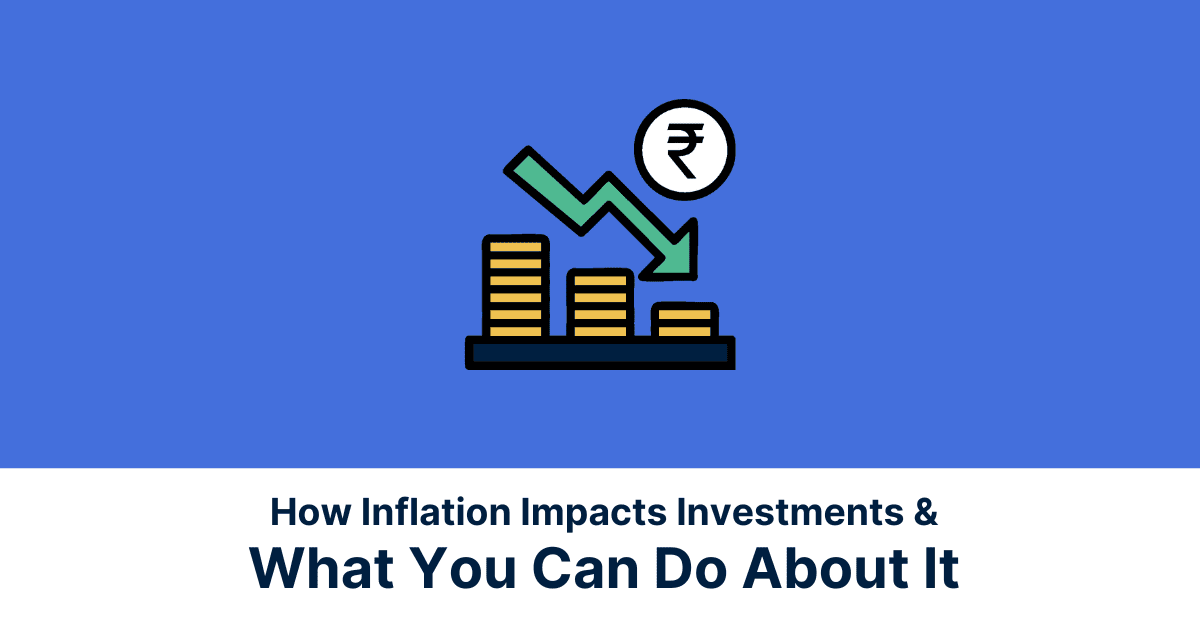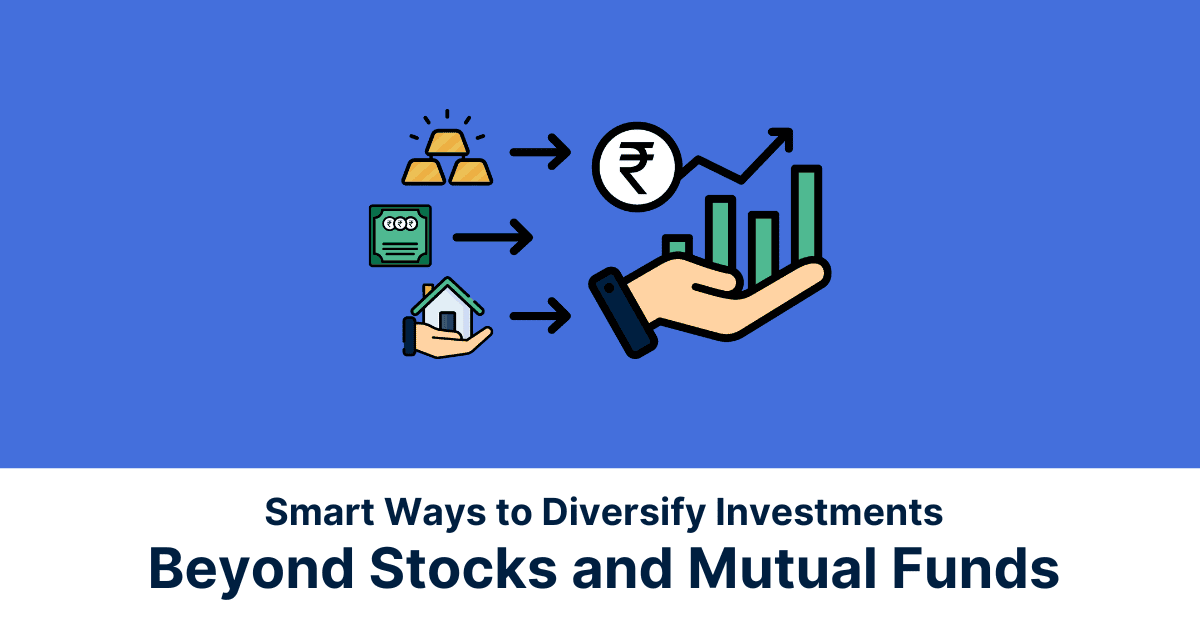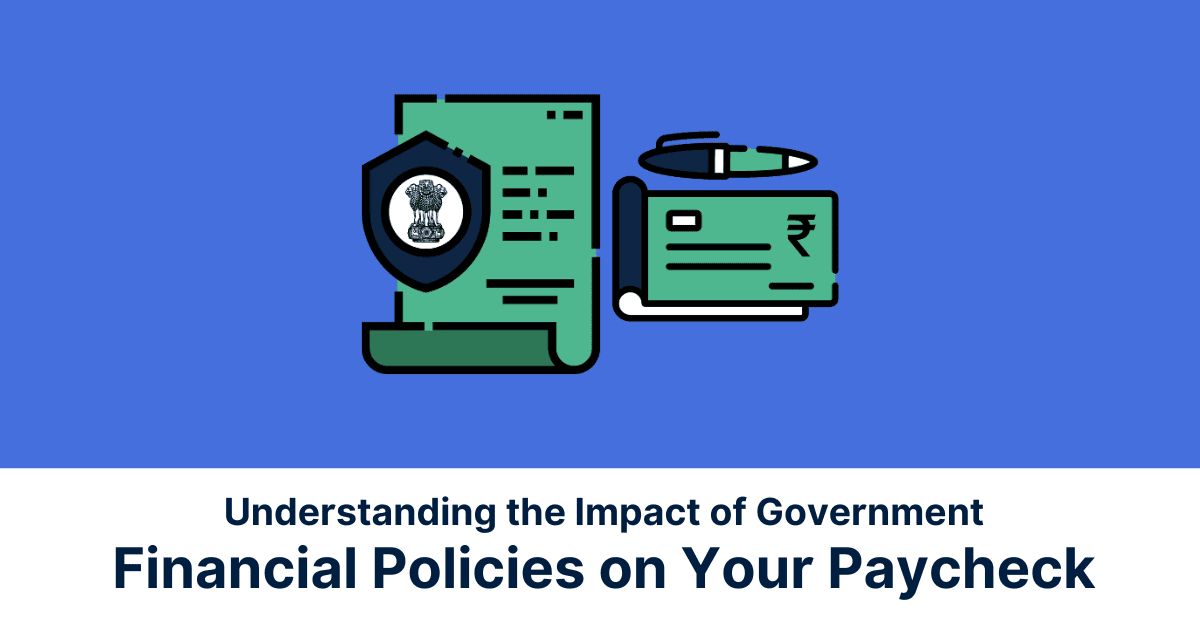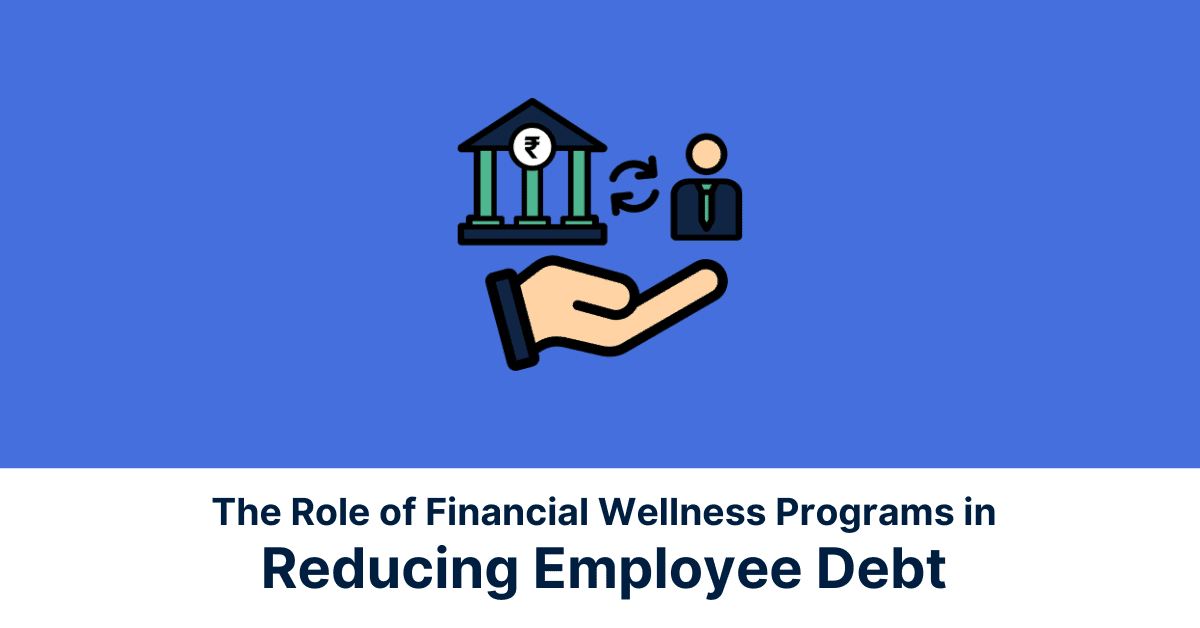Volatility is the rate at which the price of a stock increases or decreases over a particular period. Higher stock price volatility often means higher risk and helps an investor to estimate the fluctuations that may happen in the future.
That’s market volatility for you – prices jumping up and down. It’s a big deal when you’re trying to manage your investments. More ups and downs usually mean more uncertainty.
Sure, these bumpy markets can give you chances to make good money, but you need a solid plan that fits the Indian economy to handle the risks. By keeping an eye on what’s happening in the market, knowing what affects it here and globally, and using the right ways to manage risk, you can ride out the uncertainty and make the most of your investments in India.
How Inflation Impacts Investments
Defining Volatility in Financial Markets
Notice how financial markets can sometimes feel like rollercoasters, with prices shooting up and plummeting down? That’s what market volatility boils down to – the sheer intensity and frequency of these price swings for assets over a given period. Think of it as the market’s heartbeat; a rapid pulse signals high volatility, while a steady rhythm indicates calmer waters.
We don’t just eyeball this ‘nervousness’ though. We use smart statistical tools like standard deviation, which essentially tells us how wildly an asset’s price tends to stray from its typical performance, giving investors a tangible sense of the inherent risk. Then there’s beta, a yardstick that compares an asset’s pulse to the overall market’s movements. A beta greater than 1 suggests higher volatility than the market, while a beta below 1 indicates lower volatility. Grasping volatility isn’t just academic; it’s the bedrock of smart investing. Understanding volatility is crucial in investment decision-making.
Risk-Return Tradeoff
Think of investing like climbing a ladder. The higher you want to climb (meaning bigger potential profits), the riskier the ladder might be (meaning a greater chance of falling, or losing money). That’s the risk-return tradeoff in a nutshell.
Generally, if you want investments that could make you a lot of money, you usually have to accept that those investments can also go down a lot. This is especially true when the market is jumpy, which we call volatility.
For example, assets like stocks and especially cryptocurrencies can be super volatile – their prices can shoot up quickly, giving you a chance to make big bucks. But they can also drop just as fast, meaning you could lose a lot of money. On the other hand, safer investments like bonds tend to grow more slowly and steadily, so you probably won’t get rich quick, but you’re also less likely to see huge losses.
Causes of Market Volatility
Economic Indicators
Economic indicators such as GDP growth, unemployment rates, and inflation significantly impact market volatility. Strong GDP growth signals economic expansion, boosting investor confidence and stock market performance, while a slowdown can lead to uncertainty and market fluctuations. Inflation and interest rate changes also play a crucial role, high inflation can erode purchasing power, prompting central banks to raise interest rates, which may trigger market instability.
Goldman Sachs’ economists project that India’s real GDP growth could improve to 6.4% in the second half of 2025. While this suggests economic recovery, market volatility may persist as investors adjust to policy changes and global economic conditions.
By monitoring these indicators, investors can anticipate market trends and adjust their portfolios accordingly to manage risk effectively.
Geopolitical Events
Political instability, trade wars, and global conflicts contribute to market volatility by creating uncertainty in financial markets. When governments undergo leadership changes or political unrest arises, investors often react cautiously, leading to increased market fluctuations.
Trade wars, such as tariff disputes between major economies, disrupt supply chains and impact corporate profits, prompting market sell-offs. Investors fear economic slowdowns, leading to heightened volatility in affected industries.
Global conflicts, such as wars or diplomatic tensions, can significantly impact oil prices, currency values, and stock markets. For instance, military conflicts in oil-rich regions tend to drive up crude prices, affecting energy stocks and inflation rates worldwide. Similarly, sanctions and diplomatic strains can disrupt financial markets, causing sharp price swings.
Since markets thrive on stability, geopolitical uncertainty often triggers sell-offs, increased hedging activities, and shifts toward safe-haven assets like gold or government bonds.
Market Speculation
Investor behavior and speculative trading, often fueled by herd mentality, significantly drive market volatility. Buying/selling based on short-term price guesses, not intrinsic value, amplifies market swings, creating bubbles or crashes in sectors or the broader market.
During Indian bull markets, overvaluation of stocks/sectors due to hype or “tips” can occur. When sentiment shifts, sharp corrections cause volatility spikes. Panic selling intensifies downturns. Increased retail investor participation can amplify these behavioral effects. Growing high-frequency and algorithmic trading also contribute to rapid price swings. Margin trading magnifies gains and losses, adding to volatility.
While speculation provides liquidity, it increases unpredictability. For long-term Indian investors, understanding market sentiment, local behavioral biases, and the influence of news/social media is crucial for managing risks from speculation-driven volatility.
Strategies for Investing in Volatile Markets
Diversification
In India, portfolio diversification is key to lowering investment risk. Spread your money across Indian equities (large, mid, small-cap), debt (government/corporate bonds, FDs), gold (a traditional safe haven), and potentially real estate. A mix of these assets in a balanced portfolio helps cushion against losses in one area, as gains elsewhere can offset declines.
For instance, during Indian stock market slumps, gold or quality debt can offer stability. Diversifying across Indian economic sectors also protects against industry-specific issues. While the focus is India, consider international exposure via mutual funds if it suits your risk tolerance. By not overinvesting in any single asset, diversification creates a stronger portfolio, lessening the impact of market swings and improving long-term financial security for Indian investors.
Rupee-Cost Averaging
Rupee-cost averaging (RCA) helps Indian investors manage volatility by investing a fixed amount of Rupees at regular intervals, regardless of market conditions. This method eliminates the need for precise market timing and reduces the emotional impact of price fluctuations. When the Net Asset Value (NAV) of a mutual fund scheme or the price of a stock is high, fewer units or shares are purchased; when prices are low, more are acquired.
Over time, this averages out the purchase cost per unit or share, smoothing out the effects of market swings. RCA is particularly beneficial in volatile Indian markets, as it prevents large lump-sum investments at peak prices and fosters disciplined investing habits. By staying consistent with their investments, Indian investors can build wealth gradually while mitigating the risk of short-term market fluctuations. This strategy is commonly employed through Systematic Investment Plans (SIPs) in Indian mutual funds.
Hedging Techniques Available in India
Hedging strategies help investors protect their portfolios from adverse market movements. Common techniques available in India include trading in options and futures contracts on the NSE and BSE, and potentially using inverse exchange-traded funds (ETFs), although these are less common. Options trading allows investors to hedge against potential losses in their equity holdings by purchasing put options, which gain value when the underlying stock or index declines.
Futures contracts can help lock in prices for commodities or indices, reducing exposure to price fluctuations. While hedging can help mitigate risk, it requires a good understanding of these financial instruments and careful execution to avoid excessive costs and complexities. Indian investors often use these tools to protect their portfolios during periods of heightened uncertainty or before major market events.
Maintaining Liquidity in the Indian Context
Maintaining adequate liquidity is essential for navigating market volatility in India without being forced into unfavorable trades. Liquid assets, such as cash in savings accounts, money market mutual funds, and highly tradable stocks, provide the flexibility to seize investment opportunities when prices drop. Plus, having a readily available cash reserve ensures financial security during economic downturns or personal emergencies, allowing investors to cover expenses without having to liquidate long-term investments at a loss.
Liquidity also reduces the temptation for panic selling, enabling investors to hold onto their assets until market conditions improve. A well-balanced approach to liquidity, considering both short-term needs and long-term investment goals, ensures stability while preserving the ability to capitalize on market fluctuations in India.
Psychological Aspects of Handling Market Volatility
Avoiding Emotional Decision-Making
Emotional reactions to market volatility can lead to impulsive decisions that harm long-term investment goals. Fear during market downturns often triggers panic selling, while greed in rising markets can lead to overconfidence and risky investments. To avoid this, investors should stick to a well-defined investment strategy based on financial goals, risk tolerance, and time horizon.
Setting stop-loss limits, automating investments, and focusing on fundamentals rather than short-term fluctuations help maintain discipline. Market cycles are inevitable, and reacting emotionally often leads to buying high and selling low. By keeping a long-term perspective and trusting the investment plan, investors can navigate volatility with confidence and avoid costly mistakes.
Staying Informed but Unbiased
Staying updated on market trends is essential, but excessive exposure to financial news and social media can lead to panic or hype-driven decisions. Investors should focus on reliable sources and avoid reacting to sensational headlines or short-term market noise. Developing a rational approach—analyzing historical trends, understanding economic indicators, and maintaining a diversified portfolio—prevents knee-jerk reactions.
Consulting financial experts and reviewing investment performance periodically can provide perspective without unnecessary stress. Balancing awareness with objectivity can help investors make informed decisions based on strategy rather than emotions.
Long-Term Investment Perspectives Amid Volatility
Historical Market Recoveries
Market downturns are an inherent part of investing in India, but history demonstrates the resilience of the Indian economy and the tendency of its markets to recover over time. For example, after periods of significant volatility following events like the Harshad Mehta scam, the dot-com bubble burst, the 2008 Global Financial Crisis, and more recently, the COVID-19 pandemic-induced crash, the Indian stock market (represented by indices like the Nifty 50 and Sensex) has consistently rebounded and reached new highs. These examples underscore the importance of patience and a long-term outlook for Indian investors. Those who remain invested during downturns and avoid panic selling are often rewarded when the market recovers, reinforcing the value of a long-term investment approach in the Indian context.
The Power of Compounding Returns Over Time in India
Compounding allows investments to grow exponentially over time, as earnings generate further returns. Even with market volatility in India, long-term investors benefit significantly from reinvesting dividends (where applicable) and capital gains. For instance, an investment of ₹10,000 with an average annual return of 12% (a reasonable long-term expectation for Indian equities) can grow substantially over 20 years due to the power of compounding. The key is to remain invested despite short-term market fluctuations.
Missing even a few of the best-performing market days can impact overall returns. By maintaining a long-term perspective and staying disciplined, Indian investors can harness the power of compounding to build wealth steadily, turning market volatility into an advantage rather than a setback.
Conclusion
Market volatility is inevitable, but strategic planning helps investors navigate uncertainties and manage risks effectively. Understanding the relationship between volatility and investment risk allows for informed decision-making. Diversification, hedging techniques, and maintaining liquidity are essential strategies to reduce risk and enhance stability.
Emotional discipline, staying informed without bias, and maintaining a long-term perspective prevent panic-driven decisions. Historical market recoveries highlight resilience, and compounding returns reward patience. By focusing on financial goals, adhering to a well-defined investment plan, and avoiding impulsive reactions, investors can turn volatility into an opportunity rather than a threat. A structured approach ensures steady growth while minimising risks associated with market fluctuations.
*Disclaimer:
The information contained herein is not intended to be a source of advice concerning the material presented, and the information contained in this article does not constitute investment advice. The ideas presented in the article should not be used without first assessing your financial situation or without consulting a financial professional.


















